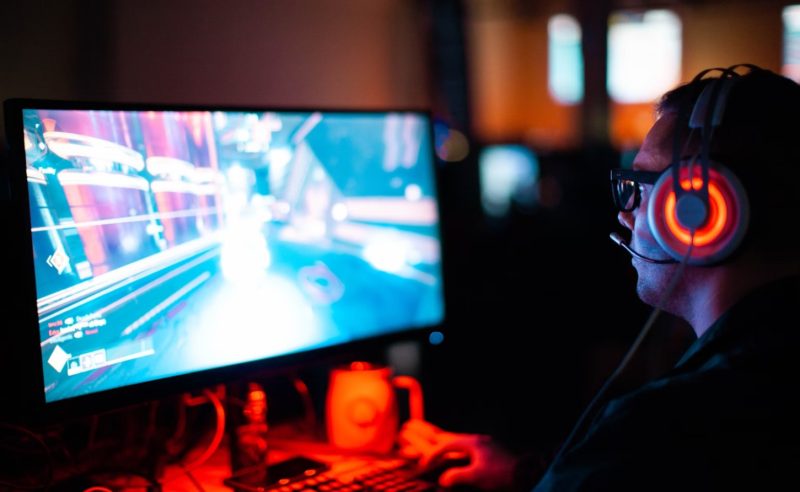
Game graphics have come a long way since the early days of pixelated screens and simple designs. Today, the gaming industry boasts visuals that are almost indistinguishable from real life. These advancements in graphics have a significant impact on the player experience, influencing everything from immersion to emotional engagement. In this blog post, we’ll explore the various ways in which game graphics affect how players perceive and interact with video games.
Evolution of Game Graphics
Early Days: The Pixel Era
In the beginning, game graphics were basic, with titles like “Pong” and “Space Invaders” featuring simple, pixelated visuals. These games relied heavily on gameplay mechanics to engage players, as the graphical limitations left little room for visual storytelling. Despite their simplicity, these early games laid the foundation for future developments in game graphics.
The Rise of 3D Graphics
The introduction of 3D graphics in the 1990s revolutionized the gaming industry. Games like “Doom,” “Super Mario 64,” and “Tomb Raider” showcased the potential of 3D environments, allowing players to explore more immersive worlds. This shift from 2D to 3D not only enhanced the visual appeal but also changed how players interacted with games, providing a more engaging and realistic experience.

High Definition and Beyond
The transition to high-definition (HD) graphics in the 2000s further pushed the boundaries of visual fidelity. Games like “Crysis” and “The Elder Scrolls V: Skyrim” demonstrated the power of advanced graphics engines, delivering stunningly detailed environments and lifelike character models. Today, with the advent of 4K resolution and ray tracing technology, game graphics have reached new heights, creating hyper-realistic worlds that blur the line between virtual and reality.
Immersion and Realism
Creating Believable Worlds
One of the primary ways game graphics impact player experience is through immersion. High-quality graphics can create believable worlds that players can lose themselves in. Realistic textures, lighting, and physics all contribute to the sense of being in a real place, making the game world more engaging and enjoyable. For instance, the attention to detail in games like “Red Dead Redemption 2” or “The Last of Us Part II” allows players to become fully absorbed in the story and environment.
Enhancing Emotional Engagement
Graphics also play a crucial role in enhancing emotional engagement. Characters with lifelike expressions and movements can evoke strong emotional responses from players. Games like “The Witcher 3: Wild Hunt” and “Detroit: Become Human” use advanced facial animation and motion capture technology to create characters that feel alive, allowing players to form deeper emotional connections with the story and its characters.
Gameplay and Mechanics
Visual Feedback and Clarity
Game graphics are not just about aesthetics; they also affect gameplay and mechanics. Clear and intuitive visual feedback is essential for players to understand the game world and make informed decisions. Well-designed graphics can guide players’ attention, highlight important objects or areas, and provide feedback on their actions. For example, the color-coded environments in “Portal” help players solve puzzles by clearly indicating interactive elements. If you want to experience how graphics enhance gameplay, click here for a live casino experience.
Accessibility and Inclusivity
Advanced graphics can also improve accessibility for players with different needs. Features like adjustable colorblind modes, customizable UI, and scalable resolution options ensure that games are inclusive and enjoyable for a wider audience. By considering accessibility in their graphic design, developers can create games that cater to diverse player preferences and abilities.
Artistic Expression
Unique Visual Styles
While realism is a significant trend in game graphics, artistic expression through unique visual styles is equally important. Games like “Cuphead,” with its 1930s cartoon-inspired visuals, and “Journey,” with its minimalist yet breathtaking art style, demonstrate how distinctive graphics can enhance the player experience. These unique styles not only set the game apart from others but also contribute to the overall atmosphere and storytelling.
Supporting Narrative
Graphics can also support and enhance the game’s narrative. Visual elements like color schemes, lighting, and environmental design can convey themes, moods, and story elements without the need for dialogue or text. For instance, the dark and foreboding atmosphere of “Bloodborne” visually reinforces the game’s themes of horror and despair, immersing players deeper into its world.
The Future of Game Graphics
Virtual Reality and Augmented Reality
The future of game graphics is closely tied to the development of virtual reality (VR) and augmented reality (AR) technologies. These platforms offer new ways to experience games, with graphics playing a crucial role in creating immersive and interactive environments. As VR and AR technology advances, we can expect even more realistic and engaging game worlds that blur the line between the virtual and real.
Artificial Intelligence and Procedural Generation
Artificial intelligence (AI) and procedural generation are also shaping the future of game graphics. AI can be used to create more realistic and dynamic environments, while procedural generation allows for the creation of vast and varied game worlds. These technologies can significantly reduce development time and costs, enabling developers to focus on creating more detailed and engaging experiences.
Conclusion
The impact of game graphics on the player experience cannot be overstated. From the early days of pixel art to the current era of hyper-realistic visuals, advancements in graphics have continually transformed how players interact with and perceive video games. As technology continues to evolve, the potential for even more immersive and emotionally engaging gaming experiences grows, promising a future where the line between virtual and real life is increasingly blurred. Whether through realism, unique art styles, or innovative technologies, game graphics will continue to play a vital role in shaping the player experience for years to come.
